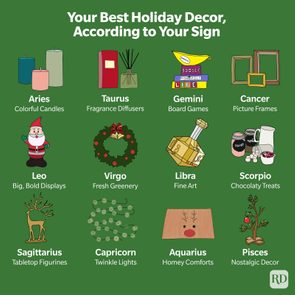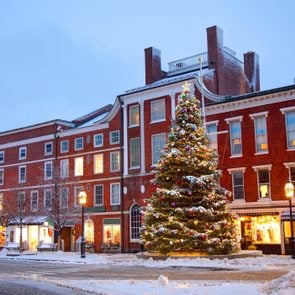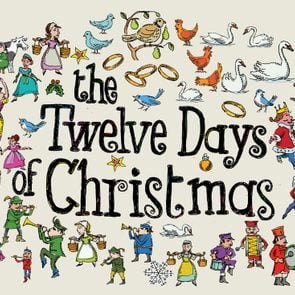Real Christmas Tree Prices Are Going Up This Year—Here’s How to Save Money on Yours
Updated: Jan. 13, 2024

How much are real Christmas trees? We share the Christmas tree prices below, along with expert tips on how to save.
While inflation has eased since last year, costs are still a concern. Unfortunately, there’s no reprieve for the holiday season, including the types of Christmas trees you purchase this year. According to a recent survey by the Real Christmas Tree Board, 57% of consumers who displayed a tree last year expect to spend the same this season, while 38% expect to pay more. So how much are real Christmas trees? Well, you can anticipate a pricey expense.
The fact that one of your favorite Christmas traditions is still going to be costly brings anything but tidings of comfort and joy. Luckily, you don’t have to give up on your Christmas tree ideas just yet! We have the details, along with some suggestions for how you can still save money as you deck your halls.
Get Reader’s Digest’s Read Up newsletter for more holiday tips, humor, cleaning, travel, tech and fun facts all week long.
Are real Christmas tree prices going up this year?
Yes, but you may or may not feel it, depending on where you purchase. According to the American Christmas Tree Association (ACTA), the average price of a real Christmas tree is up 10% more than last year. However, some growers may absorb the increase.
So how much are real Christmas trees? They will likely average between $80 and $100 this season. Those prices could scale exponentially, depending on the size of your spruce and the usual cost in your area.
Why are real Christmas tree prices going up this year?
Simply put, Christmas tree suppliers saw their own costs increase this year, and those increased costs will be passed on to consumers. That’s one of the big reasons some other things will be more expensive next year as well. The majority of the growers surveyed by the Real Christmas Tree Board estimated their input costs (the cost they incur to supply real Christmas trees) have increased up to 10% year after year. As personal finance expert Tara Murphy once pointed out, tree farmers and wholesale growers have paid more for raw materials, labor and distribution. Since they may not be able to absorb those increased costs, they need to roll out price increases for consumers.
On the bright side, you don’t have to worry about supply chain issues throwing a wrench in your plans to snag a real Christmas tree. “The real Christmas tree industry consistently meets demand,” according to Marsha Gray, the executive director of the Real Christmas Tree Board. “This year, two-thirds of the wholesale growers (67%) surveyed told us they expect to sell all the trees they plan to harvest.”
How can you save money on a real Christmas tree this year?
After finding out “How much are real Christmas trees?”—are you still willing to pay a higher price to get the perfect tree, even if you do so begrudgingly? If your answer is yes, you’re not alone. Despite 78% of consumers having concerns about inflation, 94% plan to have at least one Christmas tree in their home, according to ACTA. Still, there are ways you can save a few dollars.
Shop around
A little research goes a long way when it comes to answering “How much are real Christmas trees?” “Whether you plan on buying your tree at a retailer or tree farm, you want to investigate the prices of different types of trees ahead of your trip,” says Murphy. “That way, you’ll avoid impulse buying on the spot.” The Real Christmas Tree Board makes it easy to find a retailer in your area, whether you want to buy from a choose-and-cut tree farm, a garden center, a home improvement store or a general retailer. Once you have the info on the top shops, call ahead to find the best prices and tailor your trip accordingly.
Consider where you’re buying your tree
While it’s always nice to support a local farm or small business, keep in mind that prices will vary based on inventory levels. According to Murphy, big retailers are generally able to absorb wholesale costs better than smaller retailers. That means they can typically afford to sell trees at lower prices.
Opt for a smaller tree
The larger the tree, the more you’ll spend. Money-saving expert Andrea Woroch suggests choosing one that’s a little smaller. Not only will it cost you less, but it will also require fewer decorations, which could offer additional savings.
Wait to buy
Answering “How much are Christmas trees?” can depend on the time of purchase. Cars with Christmas trees tied to the roof are a common sight those first few days after Thanksgiving. But if you’re really looking to save money, you’ll find the cheapest trees in the last few days just before Christmas, when suppliers are trying to offload their inventory. Of course, the best time to buy anything is when demand is lower. Call around to see who still has trees and who is offering the best Christmas tree prices. Just keep in mind that if you go this route, you run the risk of being limited to a selection of Charlie Brown–style trees, so it can be a gamble.
Make your real tree last longer
Stretch your dollar by learning how to keep your Christmas tree fresh for way longer. If cared for properly, a real Christmas tree can last for several weeks. Here are a few simple ways to make your real tree last as long as possible:
- If you purchased a pre-cut tree, add a straight, fresh cut to the trunk as soon as you get home, or ask the lot to do it for you before you take the tree home. This allows the tree to better absorb water.
- Place your tree in water as soon as you get it home.
- Refill the water every day.
- Do not put your tree too close to a heat source like a radiator or fireplace. Doing so can cause your tree to dry out faster.
- Keep the room cool. Lower temperatures will help slow the drying process.
- Choose lights that produce less heat, like LEDs or miniature lights.
Get an artificial tree instead
We know, we know—it’s not a real tree. But artificial Christmas trees have come a long way, and the best ones make it almost impossible to tell whether the tree is real or fake. You might pay more up front for a fake tree, but with proper care and storage, an artificial Christmas tree can last for years. Plus, you won’t have to worry about daily maintenance, daily cleanup (those fallen needles are the worst!) or even removing the lights once the holiday is over if you get a pre-lit tree. It’s truly a no-muss, no-fuss option, and you’ll end up saving in the long run.
About the experts
- Tara Murphy is a personal finance expert and money educator. She hosts money masterclasses and private sessions to teach you how to monetize and grow your side hustle or business.
- Andrea Woroch is a money-saving expert with a passion for helping women make positive financial decisions. She also writes articles on personal finance for various blogs and websites.
Sources:
- Real Christmas Tree Board: “Wholesale Growers of Real Christmas Trees Predict Fewer Wholesale Price Increases Than Last Year”
- National Christmas Tree Association: “How to Care for Your Farm-Grown Christmas Tree”
- American Christmas Tree Association: “Season’s Greetings! American Christmas Tree Association 2023 Polling Shows Strong Demand for Christmas Trees and Décor this Season”
- CBS News Colorado: “Colorado families size down as Christmas tree prices rise”



















